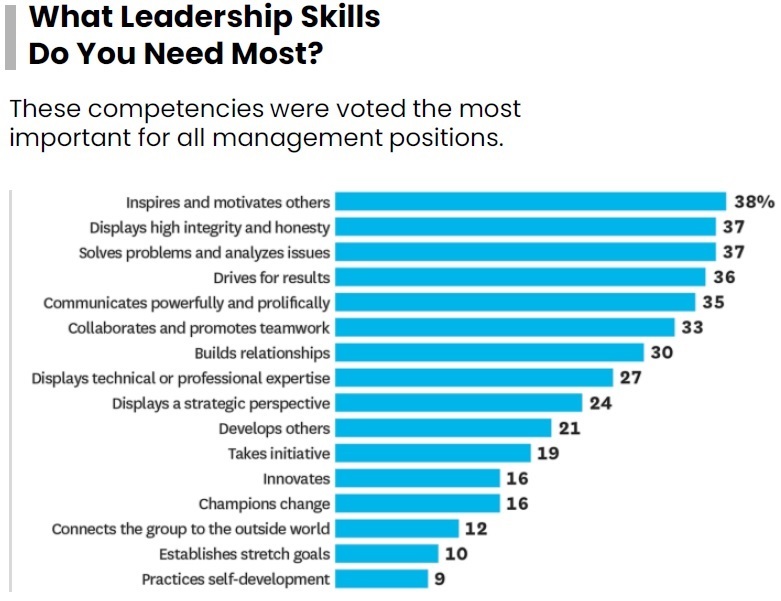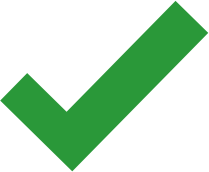7 Levers For Shaping Organizational Culture

A well-defined and thriving culture is key for the success of any organization, known to create the fundament for a sustainable competitive advantage and an engaged plus effective workforce. But how can companies shape and optimize their corporate culture? A new framework from Caliber Consulting provides guidance.
Over the years, dozens of research studies have demonstrated the value of a robust organizational culture. With the pandemic having altered several of an organizational culture’s key pillars, revisiting ways of working and cultural values is now high on any boardroom agenda.
To help leaders with understanding the different elements that make up their organizational culture, and what can be done to transition to greener pastures, experts at Caliber Consulting developed the ‘The 7 Levers for Shaping Culture’ framework.

Figure 1: Survey on Organizational Culture Among Employees
The model acts as a practical toolkit to identify and analyze a company’s core culture, with key insights providing a course for where cultural tweaks are needed. Drawn up based on extensive research on existing models and tested in the corporate arena, the framework contains 7 diagnostic levers:

Figure 2: 7 Levers for Shaping Culture
Lever 1: Leadership Role Modeling
Top organizational experts believe that sustainable change starts at the very top and cascades down to the unitary teams across the company. Knowing the direction of your company requires understanding, and modeling, the way leadership embodies the values of the company in its behavior. This is known as leadership role modeling.
Figure 3: The Skills Leaders Need At Every Level
For example, a company that champions innovation and demands its employees “put their thinking caps on” would require its executive leadership to let their own creative juices flow and pave avenues to enable employees to join in this culture. In fact, inspiring others has been voted as the top skill leaders must demonstrate at all levels of management.
Case in point: Apple
There may not be a better example of leadership Role Modeling than that of Steve Jobs, founder and long time CEO of Apple. Steve Jobs was not exactly a tech genius in fact he was a marketing expert. But that didn’t stop him from changing the way we look at technology today and it’s only because he lived and breathed a culture of innovation, creativity, and relentless perfectionism that, even today, Apple still manages to spearhead the technology industry.
Lever 2: Storytelling
One of the key elements of the framework is Storytelling. These are the narratives told within an organization that reflect the values and beliefs of the company. Think of the significant historical events of your company, the ones told repeatedly during breaks and over by the water cooler.
The story doesn’t have to be real; it could be a myth as long as it can inspire and connect employees across hierarchies and age groups. For example, a company that prides itself on its innovation may have a story to recapitulate about a time when it took a big risk and it paid off. These stories can be used to shape the culture of an organization and to communicate its values and beliefs to employees.
Case in point: Coca Cola
The company seems to always have outrageous, therefore memorable, stories surrounding its name. Coca Cola’s “closely guarded recipe”, the mystery surrounding its initial ingredients, its brand war with Pepsi, and even its marketing failures (think New Coke), are kept alive because they are a part of the company’s identity. Everyone associated with Coca Cola is connected through these very stories reality or myth aside.
Lever 3: Rituals and Work Habits
Rituals and Work Habits are another integral part of the cultural web model. These are the repetitive actions and practices that are performed in an organization. A study published by the Harvard Business School showed that performing team-building activities led to a 16% increase in how meaningful employees judged their work to be.
Activities can include things like meetings, events, and traditions like unique ways of celebrating personal and professional milestones. For companies that now operate in a hybrid or virtual model, or companies where teams and departments work in isolation, these activities become vital in instilling a strong sense of community within the workplace.
For example, a company that values teamwork may have a ritual of holding a weekly team-building activity or even an annual teambuilding retreat.
Case in point: Walmart
In 1975, the founder of Walmart, Sam Walton, visited a Korean tennis ball factory where the employees would begin their day with a resounding cheer. Sam was so impressed by this, he decided to try it back home at Walmart. Today, employees across the world do the Walmart cheer in their own languages, carrying a decades old tradition.
Lever 4: Symbols and Artifacts
The third element of the cultural web model are symbols and artifacts. These are the physical objects, images, and words that represent the culture of an organization. They can include things like logos, mascots, and mission statements.
For example, a company that values sustainability may have a symbol of a tree or a recycling symbol. These symbols can be used to communicate the culture of an organization to employees and to the public.
Case-in-point: Hubspot
When Hubspot sought to fill its culture gap, it introduced the HEART symbol to encapsulate the true essence of the company Empathy. Claimed to be the metaphorical “heart” of Hubspot , the symbol represents the 5 core values of its employees:
Humble
Empathetic
Adaptable
Remarkable and
Transparent.
Lever 5: Influencers
Power can be formally, or informally, attributed to employees, giving them control over how the affairs of the company are conducted. Employees that manage to accumulate power through informal channels (i.e. without the power that comes with job titles) are labeled as influencers. These are people who typically exert charisma within the confines of the organization to maintain a level of influence over the culture of the organization, and hence, its employees.
They may be very social and increase their familiarity among all employees or just be very well connected to the “right people” to get their way. Treating these employees as change agents and bringing them on board can help the company implement new ideas and practices much faster.
Case in point: Thomson Reuters
The leading mass media company sought to “uncoverinvisible connections” from within its ranks and harness real influence to catalyze change. The company took the help of an L&D consulting firm and surveyed 8,000 technology employees to determine who they thought wielded influence within the company. The company was able to identify individuals who displayed influence and played important roles within their teams and subsequently leveraged those connections to its advantage.
Lever 6: Grassroots Engagement
The sixth, and often overlooked, lever is Grassroots Engagement. Just as important as leading from the front, maintaining communication and feedback channels with teams working at the lower levels of the organization is equally critical. This involves measuring culture and addressing specific issues and behaviors at the team level.
For example, if we measure the cultural score of a team only to find that its innovation level is not up there with the larger organization despite corporate-level initiatives, there may be a need to tackle specific pain points that are impacting this team. A diagnosis may reveal the team’s low innovation culture score is because they work too independently. Subsequent steps can include action planning to address specific cultural shortcomings to help drive change at the grassroots level.
Case in point: Adobe
Adobe boasts a massive 26,000 strong workforce which can either bring synergies or isolation within the ranks across the multinational giant. The company believes that real time, open communication across the hierarchy is critical to the success of its culture a digital first transformation to lead the world through digital experiences. Adobe currently practices the art of frequent “Check Ins” between senior management and individual teams, as opposed to annual reviews on Key Performance Indicators (KPIs). The company claims that this helps managers understand performance issues rapidly and helps teams stay the course of the company’s new “digital first” cultural model.
Lever 7: Structures, Systems & Processes
The final lever of the framework are the Structures, Systems and Processes. This includes a company’s reward and accountability measures and is, simply put, the way any organization controls its employees. The structures, systems and processes can include reward schemes like employee awards or monetary bonuses, or accountability systems like quality assurance, appraisals, and key performance indicators (KPIs).
For example, a company can implement robust control systems to improve productivity through employee-of-the-month programs or KPI-based bonuses. This can help the company not just track employee performance but also put corrective measures when needed.
Case in point: Southwest Airlines
Named as one of America’s Best Employers by Forbes in 2021, the budget airline features an excellent employee recognition program, Southwest Airlines Gratitude (SWAG). By accumulating SWAG points based on achieving work goals, employees can redeem items from the SWAG gift shop, which includes airline tickets, concert tickets, and thousands of merchandise.

